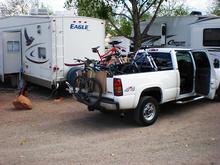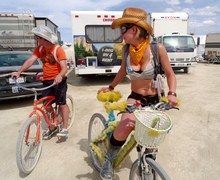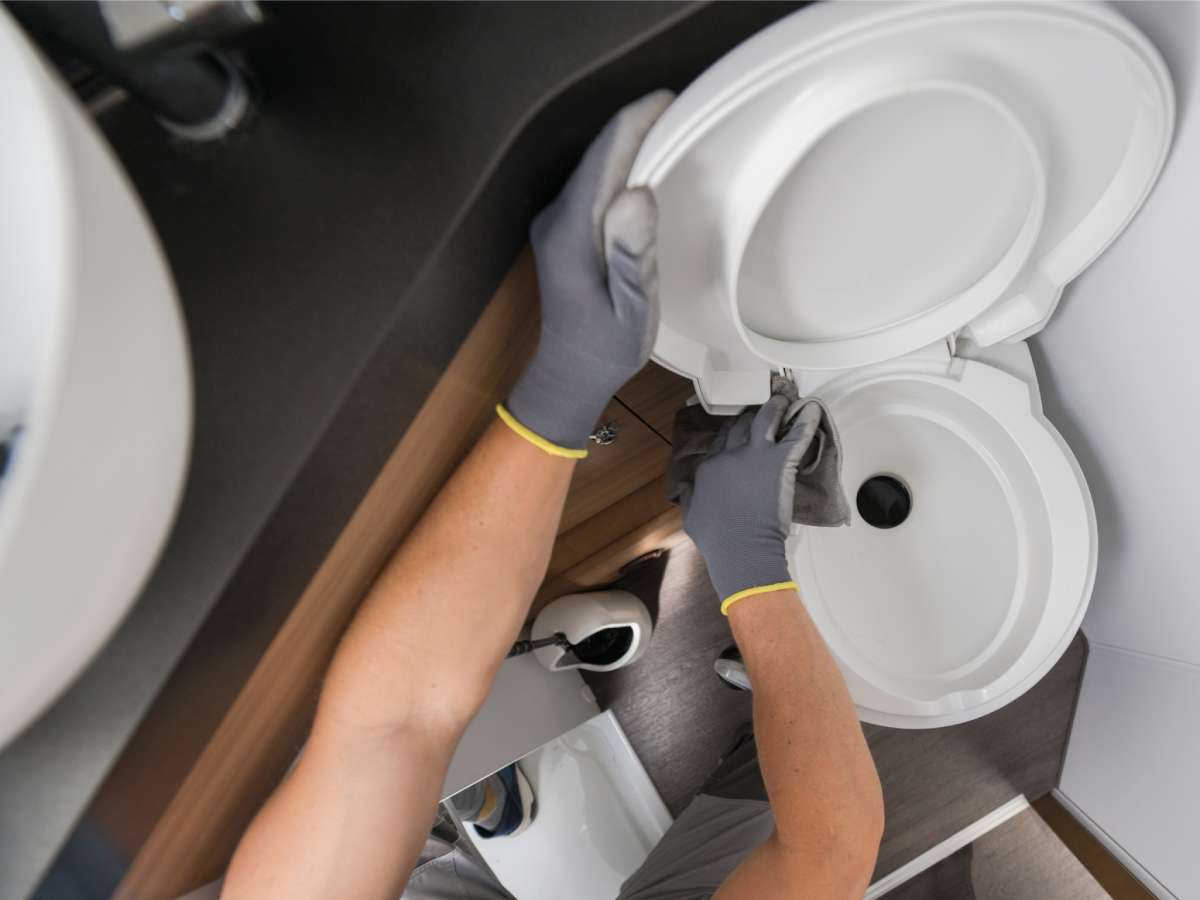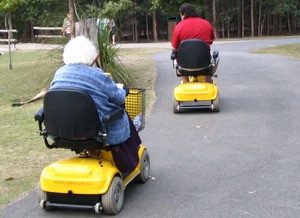 The last time my wife and I hit the trail for a weekend at the nearest RV resort, I noticed a variety of methods of transportation being used by RVers of all ages to get about the park.
The last time my wife and I hit the trail for a weekend at the nearest RV resort, I noticed a variety of methods of transportation being used by RVers of all ages to get about the park.
As I was thinking of all the different ways to get around the RV campground, a couple in their late 60’s came motoring past me on matching mobility scooters.
He was in the lead, sitting straight up in the chair of his 4-wheel machine. She was running about 30 feet behind, traveling at the same speed, as if an invisible rope tied the 2 scooters together.
If you want to take some leisurely spins through the campground or RV park — and be able to stop and visit with other campers along the way — then you’ll probably want to bring along an extra set of wheels that’s easily towable inside (or behind) your RV.
Here are all the best ways to get around RV parks and campgrounds…
RV Bikes, Scooters, Skateboards & More
After an evening’s walk, Mary and I noticed quite a few other modes of transportation scattered throughout the RV campground.
One campsite consisted of a good-sized Class C mini-home with an attached enclosed cargo trailer. Large enough to carry a mid-sized car, the trailer was used to transport an electric vehicle
that could hold 4 adults. Electric vehicles are perfect if you stay in an area for months at a time and need a way to quickly get around the neighborhood.
Some of the younger set were running around with small electric skateboards. Only the most agile of adults would want to attempt one of those contraptions. Otherwise, they might become a good method for finding your way to the nearest hospital!
Larger 2-wheel scooters with a post and seat attached greatly improve your chances of avoiding injury. They appear to be more substantial, while still being reasonably priced.
Electric scooters of all shapes and sizes have become well-designed methods of urban transportation. With European styling, they easily pass as one of their gas counterparts. The nice thing is you never have to pull into a gas station! These road-worthy scooters have a range of up to 65 miles, depending on the type of battery you opt for when you order.
One thing to remember: laws regulating electric vehicles of all sizes vary from state to state. Be sure to check the regulations concerning electric vehicles for the area before riding on public roads. Here are some other things you should know before you buy a scooter.
Of course, bicycles are the traditional way to get around the RV campground. But if you’re really in a hurry or you want to cover more territory than you’re willing to pedal, then you might want to consider an electric bicycle.
Electric bicycles give you the option of letting the bike do all the work, or extending your range by doing some of the pedaling yourself. If buying an electric bike is more of an investment than you can manage right now, rest assured, you don’t have to be left out. You can get an electric bike conversion kit and turn your existing bicycle to a combination electric/manual operation!
Whatever your preference for getting around the RV campgrounds and local neighborhoods, going electric is not only a “green” thing to do, but it also takes into consideration the comfort of others. Nobody wants to listen to noisy gas-powered machines running back and forth. If your wheels operate off electricity, people will be intrigued, rather than annoyed.
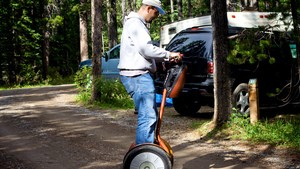 More and more RVers are using Segways in RV parks. Their top speed is 12.5 mph — 2 to 3 times faster than the average walking speed. With a Segway, you can go just about anywhere you like — in the RV park, on the hiking trails, or into town!
More and more RVers are using Segways in RV parks. Their top speed is 12.5 mph — 2 to 3 times faster than the average walking speed. With a Segway, you can go just about anywhere you like — in the RV park, on the hiking trails, or into town!
Personally, I think scooters and bicycles make the best RV campground transportation.
Just for laughs: check out the Cruizin Cooler!

